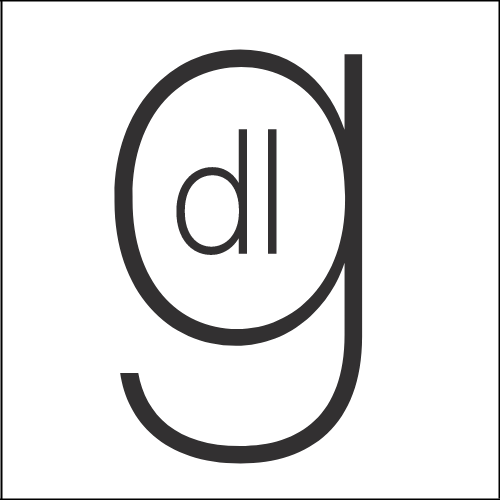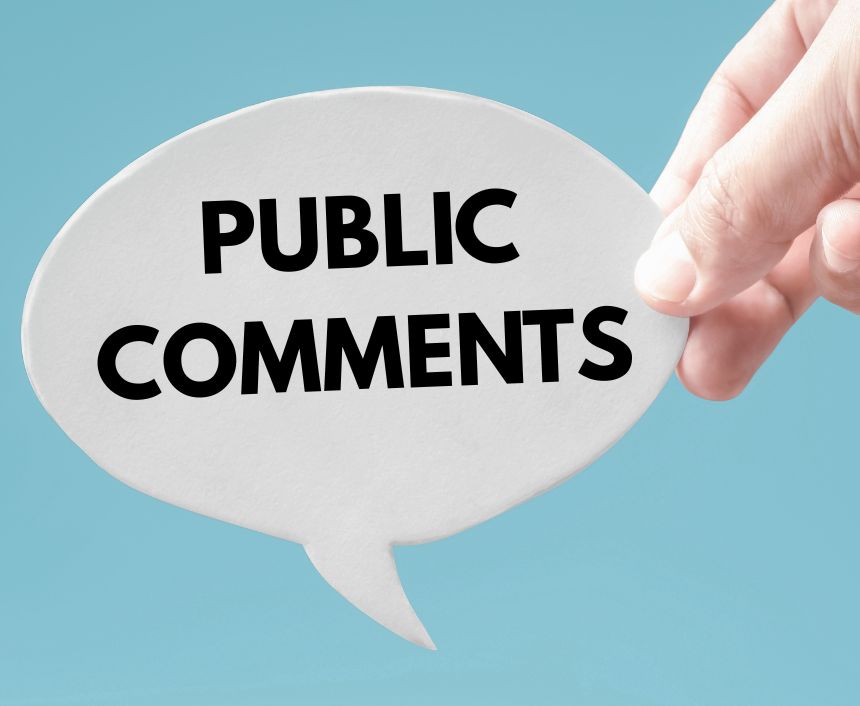We received a wide range of feedback on LightFair, much of it delivered in person at our studio during the show. Additional comments came via text, weekend phone calls, and email. We plan to publish the email responses—some with the author’s permission for attribution, while others will remain anonymous at their request. Below are the PUBLIC comments we received via email:
Natalie Bravo and Joel Siegel, Edison Price Lighting
Gean Tremaine, CEO, QTL:
Why We Need LightFair: A Critical Forum for the Lighting Industry
LightFair 2025 marked a notable shift from pre-COVID iterations; smaller in scale, with lower attendance, but it reinforced something far more important: the continued necessity of a national lighting show for the future of our industry. While the numbers were down, the quality of engagement, particularly among lighting designers, was exceptional. This alone justified the investment. But the broader question remains: Do we, as an industry, want and need a national show? The answer must be a resounding yes.
Here’s why:
- Without LightFair, we lose our collective platform for collaboration, learning, and advancement.
- Collaboration is at the heart of innovation. LightFair creates a rare and vital space where manufacturers, specifiers, contractors, distributors, designers, educators, and representatives can come together, in person, to exchange ideas, challenge assumptions, and foster partnerships that wouldn’t happen in isolation.
- Continuous learning is non-negotiable. The pace of technological change in lighting demands constant education, through classes, panel discussions, workshops, and direct interaction with manufacturers. LightFair remains a cornerstone for structured learning opportunities that are difficult to replicate digitally or regionally.
- Advancement requires a shared stage. How do we grow, evolve, and excel as an industry without a national show to showcase progress? A fragmented approach risks stagnation and diminishes our collective influence.
- Without LightFair, we risk weakening the very institutions that uphold our industry’s standards and progress.
- Organizations like the IALD (International Association of Lighting Designers) and IES (Illuminating Engineering Society) depend in part on the visibility, outreach, and member engagement that LightFair provides.
- Their survival is directly tied to opportunities for connection, education, and most importantly, funding, that LightFair uniquely provides. Without these organizations thriving, we risk losing the very bodies that establish our standards, advocate for policy, and push for improvement across the board.
- Without LightFair, we forfeit the mechanism to recognize and celebrate innovation, putting us at risk of falling behind global counterparts.
- Events like LightFair are not just trade shows; they are cultural markers of progress, setting benchmarks for design and technology.
- Innovation thrives on visibility and competition. The awards, showcases, and industry recognition foster a competitive spirit that propels companies and individuals to push boundaries. Without that public stage, we risk complacency, while other regions, particularly Europe, continue advancing and setting trends.
In short, LightFair is not just a trade show, it’s the beating heart of our industry’s collaboration, learning, advocacy, and innovation. Without it, we fracture into silos, lose momentum, and weaken the very foundations that have enabled lighting to evolve into the transformative force it is today.
From Richard Wyton, Director of Business Development, Louvers LED:
I feel like everyone is beating up on Lightfair! If Lightfair has lost its mojo, then we all need to figure out how to get it back.
The very survival of the IES (my 57th year as a member) and the IALD (member) might well depend on Lightfair regaining its former glory. Think about that for a moment. That’s something worth fighting for.
Anyone that took lighting seriously headed out to Lightfair from every part of our industry – Specifiers, Contractors, Distributors and Reps. I was fortunate to even have exhibited in a few and attended most.
Yes, back in the day, this is how it was every year. Constantly stopping to talk to people whom we knew. Appointments at exhibitors soon filled up, as people gathered to see and learn about the latest and greatest. Being educated on the latest development and networking, nothing like it.
Venue locations are key going forward in my opinion. Places easy to get to, with restaurants and hotels close by, even walkable to the convention, like Philadelphia.
Just saying………………… Chicago 2018, 28,000 registered and 600 exhibitors
Silvio Porciatti, Founder, JLC-Tech:
I am sharing my feedback about LFI in the hope that things will improve for the better. We decided to abandon our presence at LFI after our last edition of 2019. The frustration and concerns, have been the following for the last few years that we exhibited at this show:
1. Presence of too many “unregulated” Asian manufacturers. It is sad to say it, but LFI have done nothing to at least regulate the flow of Asian manufactures that are present at this show. LFI has been allowing the show floor to be taken away from commodity junk products and knock off products of reputable US manufactures, often, products that are not even designed following the US installation standards. With the arriving of L&B to manage LFI, I was hoping they would have implemented the same organizational method they have in Frankfurt, which is to organize an area for “Asian design” or wherever would be politically correct called. But that has remained a hope so far.
2. Components mixed with finish products. The fact that component manufactures are basically mixed on the show floor with finish products manufactures, create confusion on the show floor for the visitors and increment that idea of a big flea market, instead of a high-end lighting industry show.
3. Further, it would be desirable that the finish products lighting manufactures, would be also somehow organized in type of applications, rather than “innovation pavilion” and similar, which says everything and nothing in my opinion. It would be nice to create some sort of visit experience that will guide you through the show floor based on what you want to see, so grouping as best it can be done lighting manufactures company by outdoor, landscape, architectural interior, industrial interior, etc
4. The space rental cost is high, and the limitation are often too many. I would like to see exhibitors being able to do more on their own to decorate and entertain their booth. The prohibition of bringing any light food or light drinks/coffee and the obligation to rent those service via the trade show company (usually Freeman), makes it difficult to accept, for both a price point but even more for the quality of material that you would begetting with those high costs..
5. Lastly, Assuming all the above points would be taken care, I think at least 3 full days of show (10.00am to 6.00pm) every 2 years would be perfect.
Hope to help to reshape the future and relaunch this main industry event of our market.
David Gordon, Channel Marketing Group:
Regarding LightFair, the key is “getting bodies” to the conference. Focusing on drayage doesn’t drive exhibitor signups, or attendees. Perhaps the fundamental questions need to be asked. What is the purpose of LightFair?
If the purpose is to fund IES and IALD, perhaps there are different models or LightFair? It may not be best for Messe, but maybe “one big show” isn’t’ the answer any more for IES and IALD? Maybe there are other ways to provide training? To highlight products? To encourage networking? Maybe a traveling show(s) isn’t a bad idea? Maybe “training in a box” that could be an adjunct to rep shows could work? Maybe a solely IALD conference without the mass tradeshow area … manufacturers would still show up … LEDucation has proven that. Or maybe IALD needs to map where its members are and make it closer? Or go “different” and do a training conference on a cruise ship or at a vacation spot (going back to Vegas, or NYC, should probably be a non-starter.)
If it wasn’t for Asian companies, how many exhibitors would there have been?
And if a few said to you they would not come back, think what the Asian and European companies are thinking? And we, instinctively, know Acuity, Current, Signify / Cooper had people there. The turnout affirmed that they should not attend in the future.
Blair Smith, MP Lighting:
Good:
- The blackout. The lack of ambient light in the exhibition hall is super. This creates a luxurious setting and a unique atmosphere. This suits our brand very well.
Union Interference. Typically, the unions at these shows are so challenging to work with. They make things very frustrating and expensive for exhibitors who set up and take down booths that were created and designed by the same manufacturer. The unions, Shepard and Elden, here in Las Vegas, were easy to work with, helpful, and did not overstep their authority as some do. - Carpets: The floors were carpeted. They aren’t always carpeted (Euro Luce for eg). People like this.
- Seminars and Education. The people who attended the seminars had lots of good things to say about the sessions. This is important as it brings in specifiers and agents.
Negative:
- Terrible glare from neighbouring exhibitors. The glare from some booths shining directly into people’s eyes was absolutely offensive. In the past, this was not allowed. The show did nothing to address this. It was blinding!
- Curate the booths: mixing architectural products with components, drivers, and controls, etc, was a mess. All the component manufacturers should be collected into one area. All the architectural products should be in one area. What happened?!
- The washrooms (men’s) were disgusting. The Convention Center needs to do a better job here.
- Other manufacturers that attended but did not exhibit. It is shameful that other manufacturers come to LightFair only to look around without displaying a booth. Scale it down many times, but don’t boycott it. More key specifiers and agents would attend if more architectural manufacturing companies exhibited.
- Agencies that didn’t attend: It is disappointing that so many agencies skipped the show. I can’t visit each agency as a sales manager with a huge territory. However, Lightfair has traditionally been a great event for seeing the majority of agents in a venue all at once. Even neighbouring agencies skipped the show. Sad. In years past, they attended and brought specifiers with them. This was totally lacking.
- Marketing and hype: not enough fanfare. This used to be the event of the year. It needs more lead-up hype. Also, where was all the signage, balloons, banners, etc.? The signs at the entrance were pretty minimal compared to the past. On top of that, the opening night cocktail event was poorly announced. I learned of it after returning to my hotel. No one knew about it.
- The Lightfair Website: awful! Key info was so challenging to find or missing: hours of exhibition hall, exact show address, problems obtaining passwords, confusion about show rules, requirements, etc, no info about cocktail event. In addition, communication with show management was extremely slow or totally lacking at times.
All that said, we were proud to be at the event. I hope this show will grow and retain or exceed its old glory as the premier lighting event. Perhaps these are growing pains and the show learns from these issues. It does require the support of manufacturers and agencies to lure the specifiers back, as seminars and classes alone won’t do it.
Donald Peifer, Industry Veteran
- Limit booth size: LFI is synonymous with the 80’s, a time of excess and an embarrassment of riches. Its not simply the cost of a large booth; it is the resources to prep/staff/airfare/hotels the soft costs of which no CFO can reconcile in today’s economy.
- Regionalize–I know many people who actively avoid Vegas. Staggered shows throughout NA allows the reps and local design community to be properly engaged and provide education that is more applicable to local jurisdictions. For large manufacturers, the same booth that can work for LEDucation can be used for LFI–serially moving from region to region with maintenance in between. Let’s create a new culture of trade shows as a regular way to get local lighting communities together. Some of the most successful manufacturers started out focusing regionally (Finelite comes to mind.) Startups who can’t afford the LFI price tag and, more importantly, may not be ready to scale to the entire country can be represented in the regional trade show theater. While the major cities are obvious choices, there are rep agencies throughout the country in minor but not insignificant markets: 50 cities in 50 months? LFI Omaha? LFI Canada?
- Proliferate–unlike car shows that roll out concepts that inspire, LFI is tame by comparison. This is mainly because, manufacturers don’t want to tip their hand to those who would seize upon the ideas and compete in a high-stakes/high profile arena. The answer? Lower the stakes. A smaller regional show offers an opportunity for manufacturers to flash/tease cutting-edge concepts at specific shows–getting invaluable market feedback while minimizing exposure. Also, committing a product to LFI means taking a snap shot of it many, many months prior to the show in order to build the booth and marketing around it. A cutting-edge cylinder in February may be passe by November.
- Organically, get rid of the junk–lighting folks bemoan all the glare and brand erosion from proximity to low-quality goods. Well, it is an easy bet for the purveyors of cheap products to show up at a once every two year event that still holds industry cache. By regionalizing and proliferating, the manufacturers of cheap goods will naturally fall away.
Editor’s Note: This article has been updated.





